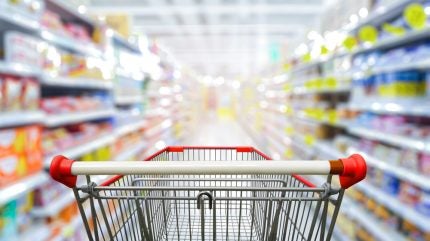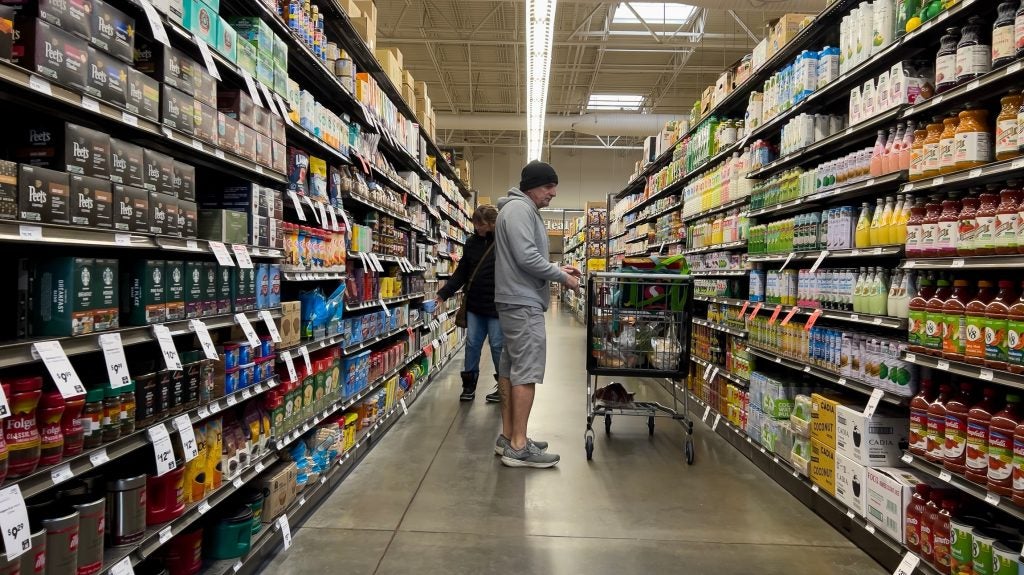
Reluctant to cut prices with inflation proving sticky to some observers, US packaged food manufacturers are delving into their war chests in a quest to return volumes to positive territory.
Tactics emerging so far centre on the more traditional methods of promotions, marketing and new product innovation, aligned with price-pack architecture.
More importantly, perhaps, is the use of data and analytics to better understand the consumers’ purchasing priorities when they remain pressed with prices still rising to some degree and interest rates at historical highs.
With artificial intelligence (AI) a handy tool in that endeavour for US food producers, social media is also lending a hand, with online influencers reportedly playing a role, presumably targeted at younger generations.
Despite the deployment of such measures, this year has not yet turned out to be the flick-of-a-switch moment for volume restoration, although recent figures from the likes of McCormick & Co. and Conagra Brands show declines are moderating.
Nevertheless, the jury is still out on whether a return to volume growth is a 2024 or 2025 story, while food manufacturers also seek to protect revenues inflated in the past few years by pricing.

US Tariffs are shifting - will you react or anticipate?
Don’t let policy changes catch you off guard. Stay proactive with real-time data and expert analysis.
By GlobalDataWhile restoring volumes has become a priority, Andrew Csicsila, a partner and managing director at US-based consultancy AlixPartners, suggests it’s all about maintaining market share, and perhaps with M&A thrown into the mix.
“People are trying to plug the dam, so to say. It’s not necessarily about regaining a lot of share, it’s about making sure that they don’t lose share,” Csicsila explains to Just Food.
“It’s not like all they have to do is put another 200 to 300 basis points of marketing spend back in and they’re going to get tonnes of volume. It’s about how do they hold the volume during the next several quarters as we’re in this situation where everyone is talking about top-line.”
Food manufacturers are assessing what they need to do from a marketing, trade spend and promotion standpoint to “hold” volumes, he says, adding that companies will be reviewing “how they operate, how they run their plants to feed that marketing engine”.
M&A as route to volume growth
Csicsila also suggests M&A will be another route to volume growth after 18 months of relatively benign activity, although he admits lofty valuations remain a “challenge” in getting transactions over the line.
“In our view, there’s going to be a lot of M&A. There’s a lot of chatter going around about acquisitions,” which may materialise in the second half of the year and into 2025, he says.
“We’re very bullish on some of the M&A activity. Some regional players are likely going to be targets of some of the national players. As those valuations come back to earth a little bit, that’s going to be another path for lot of people for growth.”
In the meantime, commodity inflation has not completely disappeared, tying food manufacturers’ hands somewhat in terms of flexibility to reduce prices, if they even ever plan to do so, to support volumes.
Until you see massive drops in total input costs for these companies, they’re not going to have a lot of wiggle room to cut prices
John Baumgartner, Mizuho Securities
Mizuho Securities suggests, based on an April survey, that “stickier-than-expected” US inflation will prevent consumer spending from improving materially in the short term with “potential downside” should costs tick higher again.
John Baumgartner, a managing director at the Japanese investment bank, says there are upside risks on commodity inflation from elevated cocoa, sugar and coffee prices, along with weather events like El Niño.
“Until you see massive drops in total input costs for these companies, they’re not going to have a lot of wiggle room to cut prices, unless they want to cut profit margins. Nobody wants to do that. What you’re more likely to see is improvements in promotion,” Baumgartner tells Just Food.
“Using better data, using AI, using better analytics to understand the return on promotional programmes, sticking with the programmes that have good returns, and cutting back on programmes that don’t.”
Smaller pack size offerings at a cheaper price point, not shrinkflation, could also help with volume recovery as part of revenue growth management techniques, Baumgartner says, flagging the potential for grocery volumes to return to growth “later this year”, aided by the higher cost of eating out.
“Hold ground”
Positive volumes are more likely to play out in 2025 rather than this year, according to Csicsila’s view as “hold ground is the message right now”.
He adds: “There’s a two-front battle going on. Food manufacturers are trying to hold volumes and make sure that they’ve got the right balance of marketing spend. But, while they’re doing that, they’re trying to right-size the organisation internally – what can we do from a cost measure standpoint?”
Brendan Foley, the CEO of McCormick, spelt out the US company’s plans presenting first-quarter results in March. Increasing promotions and narrowing the price gaps with private label are key considerations going forward as he expects volumes to improve as the fiscal year progresses.
“Brand marketing, new products and packaging innovation, category management, proprietary technologies, and customer engagement continue to be the initiatives behind our growth levers,” Foley explained.
“We are prioritising investments to connect with consumers and fuel growth. Revenue management will continue to be an important tool for driving growth, and we will consistently leverage real-time analytics and insights to refine our plans.”
Conagra Brands, meanwhile, is taking a similar approach in terms of advertising and merchandising as the snacks, frozen and chilled foods maker continued to see a “sequential volume recovery”.
“We are continuing our robust brand-building investments across merchandising, innovation and advertising to drive volumes, while sustaining the gross margin recovery we have worked hard to achieve over the past couple of years,” CEO Sean Connolly said as he presented third-quarter results in April.
“We also continue to prioritise investment in innovation, which remains the most important tool in our strategic playbook and the key to strengthening our brands while driving sustainable, long-term growth.”
While Conagra’s volumes were still down in the latest quarterly reporting period, they have improved from a 9% decline in the third quarter of fiscal 2023, when the company's full-year organic sales grew 6.6% to $12.3bn.
Around 52% of Conagra's brands held or gained market share, which was “fuelled by the solid lifts we've generated through high quality merchandising investments”, Connolly said.
He refrained from pinning down a timeframe for volumes to turn positive but said they are gaining “momentum” and heading “toward that Mendoza Line here that everybody wants to see us cross over at some point”.
Volume “inflection”
Retail food volumes, however, “continue to remain weak”, analysts at US investment bank Stifel wrote in a 16 April research note “even as the rate of year-over-year pricing wanes”.
Of the 61 “top food categories” Stifel tracks, revenue grew 0.9% in the four weeks to 7 April, with volume down 0.3% based on a price-mix contribution of 1.3%. Private label, meanwhile, notched up volume growth of 2.5% and 1.4% in price, with revenue across the same categories increasing 3.9%.
Over a 52-week period, branded volumes were down 1.4% and own-label volume was up 2.6%.
“We do expect volumes to improve in 2024 with volumes inflecting to growth in the second half of the year benefiting from lapping pricing actions, SNAP reductions, and easier comparisons,” the Stifel analysts wrote.
Another US investment bank, TD Cowen, came up with similar conclusions on food volumes, noting investors are “warming up to the idea that food growth trends will improve sequentially during the year as the industry laps last year's SNAP cuts and consumers become more accustomed to the higher prices at retail”.

Worryingly for manufacturers, however, are losses in market share, which TD Cowen put at 95 basis points for Cheez-It snack maker Kellanova in the 12 weeks to 6 April, 92 points for McCormick and 84 points for Cadbury owner Mondelez. Private label was the culprit, analysts wrote in a 16 April report.
The TD Cowen analysts said: “The results are consistent with our view that sequential improvement for the big companies will depend more on their market share trends rather than just the broader consumer backdrop.
“Our analysis of 2023 sales trends in 'Big Food' indicated that 50% of their volume declines came from market share losses and only 33% from broader weakness across the grocery store.”
‘Influencers’ take stage
Whatever the efforts and alternative strategies food manufacturers are taking to restore volumes, ultimately, a recovery rests with the consumer.
People may have to adjust to higher prices as wage growth catches up with inflation and purchasing power normalises, as such, Mizuho’s Baumgartner says.
“We've seen some categories where prices are up 20% or 30% over the past 18-24 months. Naturally, you're going to have elasticity in the early stages but then you would assume that, as incomes rise, catch up to prices, consumers adjust to the higher prices,” he suggests.
“They get used to it and they give in and start buying them. When you've got people who are cutting back because of belt tightening, there tends to be this fatigue after a while of being frugal.”
Citing industry data, Baumgartner says US food volumes have trimmed declines from 3-3.5% in the second half of 2023 to down around 1.5% now, backing Connolly’s view at Conagra that they are “moving in the right direction”.
Innovation around products and the forms of marketing adopted can only help in that endeavour, along with the role of social media in promoting new offers, according to Csicsila at AlixPartners.
There’s a big wave of influencers that are driving volume and share
Andrew Csicsila, AlixPartners
“The best route to drive price increases or to steal share is through innovation – innovation in the product, innovation in the packaging, even innovation in your marketing message is going to bring in new customers,” he says.
“There is also a big drive across CPGs in the social media space and the influencers – a new avenue in the last 12 months. The influencers are driving a lot of new customers and that's how a lot of companies are testing innovation and R&D.
“Traditionally, they have looked at digital media, advertising through the Googles, the Facebooks and through commercials. Now there's a big wave of influencers that are driving volume and share.”
With US consumers perhaps now exhausted from grocery price increases and the pressure on household budgets, food manufacturers will have to resort to other measures.
Namely, Csicsila suggests, “more emphasis on their trade spend and their marketing dollars to see how they can restore the volumes and not lose too much of their pricing”.
He adds: “You've seen a lot of pressure from Walmart, to basically say, enough is enough. We're pushing back on your prices, we are going to drive you back to earth and what your prices are because our consumers are pushing back on us. If we're losing volume, something's not right.”



